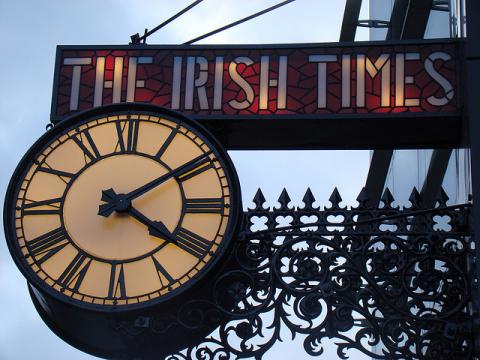RTÉ's easy money will see hard Times continue

A day or two after the count in the February election, the Irish Times produced a supplement giving all the constituency results, along with analysis and profiles of every one of the 166 TDs elected, in a creatively designed package, writes Vincent Browne.
It prompted me to e-mail Geraldine Kennedy, the then editor of the Times complimenting her on the publication.
Kennedy replied that it was the only compliment I had ever paid her in all the years we had known each other (about 35).
I replied with a litany of compliments, all of which were genuine: along with my close friend, the recently-deceased Gerald Barry, Kennedy was the best political correspondent I had known. She had the best instinct and hunger for news of any journalist I had known. Of course, she had achieved great distinction of being the first woman to become editor of a national newspaper in Ireland.
As editor, she had performed valiantly in managing to maintain the circulation of the Irish Times above the crucial 100,000 threshold at the most difficult of times, with scarce resources and declining newspaper sales generally. She was also a person of integrity and decency.
Her decision to retire, announced shortly after our exchange, was a surprise - but perhaps she felt that the Irish Times needed a new editor to deal with a new crisis in the newspaper, the fourth it has faced in the last 50 years.
When Douglas Gageby became editor of the newspaper in 1963, the Irish Times's circulation was 35,300.The newspaper seemed in terminal decline and was losing money.
By the time Gageby resigned the editorship first in July 1974, the circulation had almost doubled to 69,500, and the company was back in sturdy profitability.
But under the new editor, Fergus Pyle, circulation began to fall, and the oil shock of the mid-1970s caused advertising to dip.
The paper was back in trouble. Gageby returned in 1977 and again rescued the newspaper, with circulation rising and the company returning to profitability.
Conor Brady took over from Gageby in 1986, and the paper's circulation and profitability continued to soar. Profits in 1998 were IR14.1 million and circulation reached 111,729. However, things started to go wrong again in 2001, as advertising dropped badly and the company racked up losses.
There were difficult readjustments, including a change of editor with the appointment of Kennedy in 2002.
Again, sales increased and profits returned, boosted in large part by massive property and recruitment advertising. But when these collapsed in 2008, so did the fortunes of the newspaper. The Irish Times was back in crisis.
In 2009, the company made an after-tax loss of €27.9 million, having made one of €37.8 million in 2008. Turnover fell by 26 per cent in 2009, and advertising income was down by 42 per cent.
There was an exceptional loss in 2009 of €19.3 million, including an €8.5 million write-down of its investment in the property website Myhome.ie. But it still had €13million cash on its balance sheet.
That cash must be well gone by now, for there were further substantial losses in 2010.The accounts for that year will not be published until September, and the prospects for 2011 and 2012 can't be encouraging.
This is almost certainly the biggest crisis for the Irish Times in 50 years.
The apprehension is that it will need an equity injection, which would take the newspaper out of the trust and put it at play in the corporate media world.
It is not the only media company in crisis. Independent News & Media (INM) is profitable, but its share price has dropped by 90 per cent over the last few years.
The Crosbie group in Cork, which owns the Irish Examiner and the Sunday Business Post, also faces its own difficulties. Radio stations around the country are in trouble, as are provincial newspapers. TV3 is faring better, but with difficulty.
Of course, the primary difficulty is the sheer scale of the economic and financial meltdown, but there is another serious difficulty: RTÉ.
The state broadcaster sucks up a huge part of total advertising revenue, thereby endangering all other media. It sucks up this revenue in part because of the relatively cheap rates it is able to offer advertisers, due to the massive subsidy RTÉ gets from the licence fee - a total of over €1 billion in the last six years.
It is a gigantic presence on the Irish media scene: three TV channels, four radio stations (not counting digital ones), publications which are vigorously promoted on its other platforms, and a website financed out of the massive subsidy and its inflated advertising revenues.
That RTÉ still manages to make a whopping loss is a tribute to the ingenuity of its management, although it is only fair to acknowledge that its director general has been in situ for little more than a couple of months.
Unless Pat Rabbitte, the minister now responsible, gets around to paring back RTÉ substantially and arranging for the licence fee bonanza to be shared among all broadcasters, there will be carnage in the media arena.
It would be a huge pity if the venerable Irish Times were in any way compromised in this conflagration.
[Image top via Cian Ginty on Flickr]
